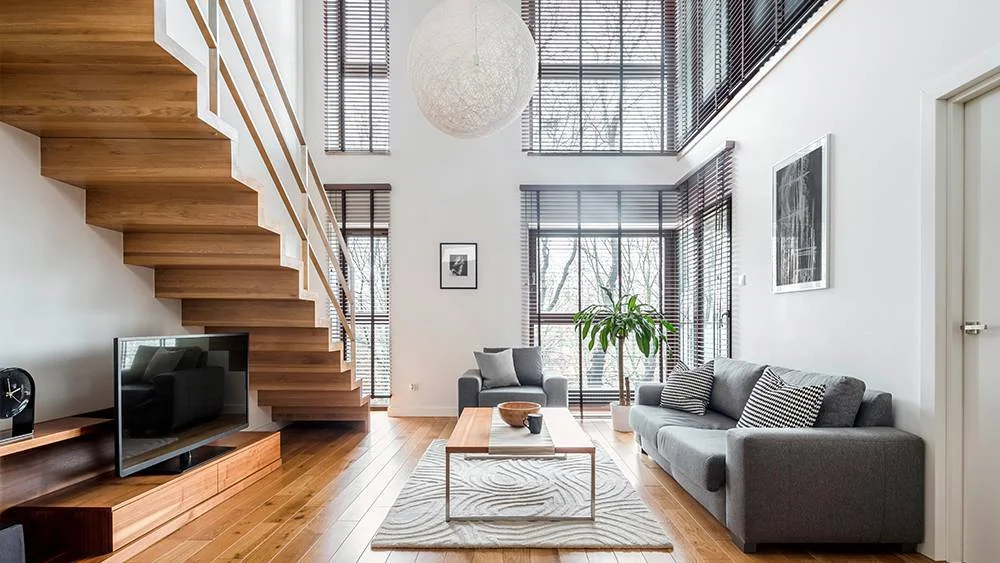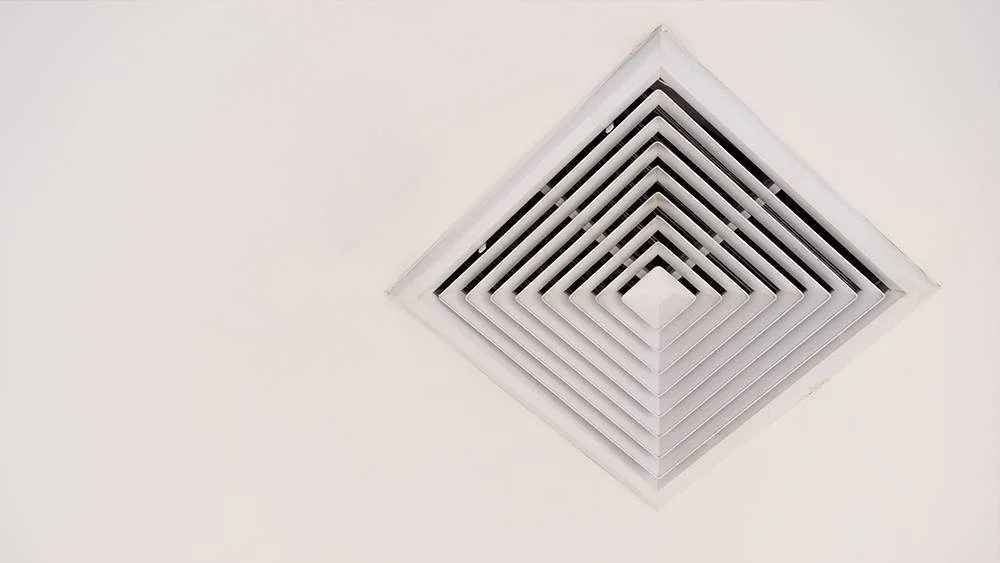
Key Takeaways
- Since hot air naturally rises, upper floors tend to be warmer.
- Install ductless mini-split ACs for targeted cooling on second floors.
- Use ceiling fans counterclockwise in summer to push cool air downward and enhance airflow.
This is a tale as old as time, and if you have a two-floor home, you will be well aware of it. During the summer months, when the sun’s intensity is at its peak, you might have noticed that the upper floors of the house are much warmer than the lower ones. Both the floors are as different as night and day, making it very uncomfortable for those who spend the greater part of the day upstairs. This is especially true if you have poor airflow to the second floor. So, how to increase airflow to second floor?
Getting a solution to this problem is of utmost importance. While you can do many things to keep your upstairs cool, one of the most important is to increase the airflow to the second floor.
Keeping your home well ventilated makes a significant difference to the temperature, home humidity levels, and general indoor environment. It Improves airflow to your second floor and makes that part of your home even more pleasant.
Let’s dig into the problem and see how you can tackle it.
Why Is the Second Floor Warmer?

Before we get to the solution, it is essential to know the cause behind reduced airflow on your second floor. There are a couple of reasons why heat accumulates on floors upstairs:
1. Rising Hot Air
You must’ve read this a lot by now that hot air rises and cold air sinks. This is the primary reason why your upstairs is hotter than downstairs.
If there is a kitchen situated on your lower floor and stairs are nearby, chances are that the heat from your kitchen makes its way upwards and accumulates over time. Drafts of warm air from heat sources travel upwards and keep on adding to the already hot temperature.
Over the course of the day, all the warm air has gone over to your second floor, making the temperature a few degrees higher.
Now, when you turn on your HVAC unit, it has to work harder to expel this warm air out of the space and bring the temperature down. If your upper floor has a lot of rooms, the HVAC unit has to work even harder.
Even if you have a central cooling system, you may also struggle to maintain the temperature upstairs. You’ll set your thermostat at the perfect setting but still won’t feel comfortable. Airflow might feel reduced as compared to the first floor.
2. Hot Roof from Direct Sunlight
Perhaps the most obvious reason for the upper floors being hotter than the rest of your home is the sun.
With the sun blasting down at full power for an extended part of the day, your roof is bound to soar in temperature, and with it, the entire floor. If your roof is of a dark color or there is no shade around your home, things can get even hotter. Couple these factors with poor airflow to your second floor, and you can find yourself in a literal baking oven.
Your best choice to make any mini-split, window,
or portable AC smart. Enhance your comfort and savings.

This problem is not limited only to the roof. The sidewalls of your upper portion can also get uninterrupted sunlight throughout the day and be a cause for excessive heating.
A possible remedy to this can be attic insulation. With insulated walls and roofs, the interior space will not become as hot as it would otherwise, keeping the internal temperatures within reason. Moreover, wall insulation does not take up any energy to be effective!
During the height of summer, you may find it impossible to live upstairs. But we’re here to change that.
Keep on reading to learn about the ways to improve airflow to your second floor and make it heaven even when it’s super-hot outside.
How to Increase Airflow to Second Floor?

There are a few ways through which you can get more air into your upper floor. You’ll just need to put in a little effort and make your upstairs as comfortable as your first floor. The following tips and tricks will comprehensively guide you about how to increase airflow to second floor:
1. Keep Air Conditioner Running in Fan Mode
By having your air conditioner constantly run on fan mode, you can have ventilation all day long. This is because the fan mode keeps the air circulating and a low energy cost. It’ll maintain a good environment throughout the day, and you won’t be drenched in sweat.
Moreover, with proper air filters installed in the system and regular maintenance, the air is constantly recycled and cleaned, improving indoor air quality. Keep a regular check on your air filter, as a clogged-up dirty air filter can hamper the airflow.
2. Install a Ceiling Fan
A ceiling fan is a very cost-effective tool to increase airflow. At a minimal energy cost as compared to an AC, a ceiling fan keeps the air fresh and moves heat across the house very effectively.
Although fans cannot introduce cool air, they spread the air to a wider area. You can even use your fan in conjunction with your AC. This helps to increase the airflow of the conditioned air coming from your air conditioner.
3. Increase the Size of Return Vents
If you have a central or ducted system at home, there would be supply and return vents and ducts on your second floor.
The problem is how to increase airflow through upstairs vents?
More air can be introduced in your room by making the vents and ducts bigger and keep the airflow draft going.
Use bigger vents so that warm air can be constantly removed from your second floor. This can help sort out poor airflow to second-floor problems.
A limitation with this solution, though, is working space. If you are in an old house and there is not enough space for larger vents or ducts, this option is eliminated.
4. Increase Number of Vents
If you cannot increase the size of vents and ducts, why not just increase their number!
More vents mean more avenues for the hot air on the floor to get trapped and removed. The limitation is that there has to be enough space in the ductwork to do this.
If you don’t have enough room to add more vents and ducts, there is another solution.
5. Clear the Vents
This might seem a very basic task, but you would be surprised by how many people place furniture right in front of the air vents, blocking airflow.
Go for a walk around your space and look for any furniture items or appliances located in front of the air vents. Shift them around so that the vents have clear space and force the maximum air into your room.
6. Close Vents on Lower Floors
To increase the airflow to the upper floor, you can partially close the vents and ducts running through the cooler lower portion of the building. In this manner, the maximum amount of air will flow directly from the HVAC unit towards the upper floor.
You do not necessarily have to close the lower floor vents all the way. Try closing them only partially and check the temperature change on the upper floor. If that still doesn’t work, you can then try closing the vents even more until you find the sweet spot.
Take care, though, that you do not close the vents to such an extent that the lower floor does not get any airflow at all.
7. Go for Ductless Air Conditioning
Installing ductless air conditioners removes the problem of getting ducts into tiny spaces or having a complete overhaul of your home.
These air conditioners can be fitted very easily within hours and without any major renovations. They can keep your house cool and also keep the air feeling fresh right where you need it.
Ductless air conditioners like mini-split, portable and window ACs are more energy-efficient and also help reduce your cooling cost. Since there is no ductwork involved, you don’t have to worry about leaks and escaping air.
8. Get a Zoned HVAC System
If you have a multi-story home, running an air conditioner at full speed would make sense to you. You may think it is best because more air will flow to your second floor. But doing this can make your first floor very cold and uncomfortable. Not to mention the energy wastage during this whole process.
To prevent this problem, you can use a zoned HVAC system.
You can create zones using your existing HVAC system. It allows you to get personalized, individual cooling for each zone or floor.
For example, you can make your second floor a single zone and your lower floor another. This way, you can set different temperatures for each floor. You can set your second floor’s temperature slightly higher than your first floor.
Creating different climate zones won’t only make your life convenient but also help reduce your energy usage. You can use a dual-zone smart thermostat with your central AC and a smart AC controller with mini-split, portable or window AC to create zones. These smart climate control devices will enhance your comfort, allowing you to control your aircon from anywhere, anytime!
Whatever the case may be, now you know how to increase airflow to second floor and keep it at a comfortable temperature. It’s time to get started and make your second floor livable again, even during peak summer times!








